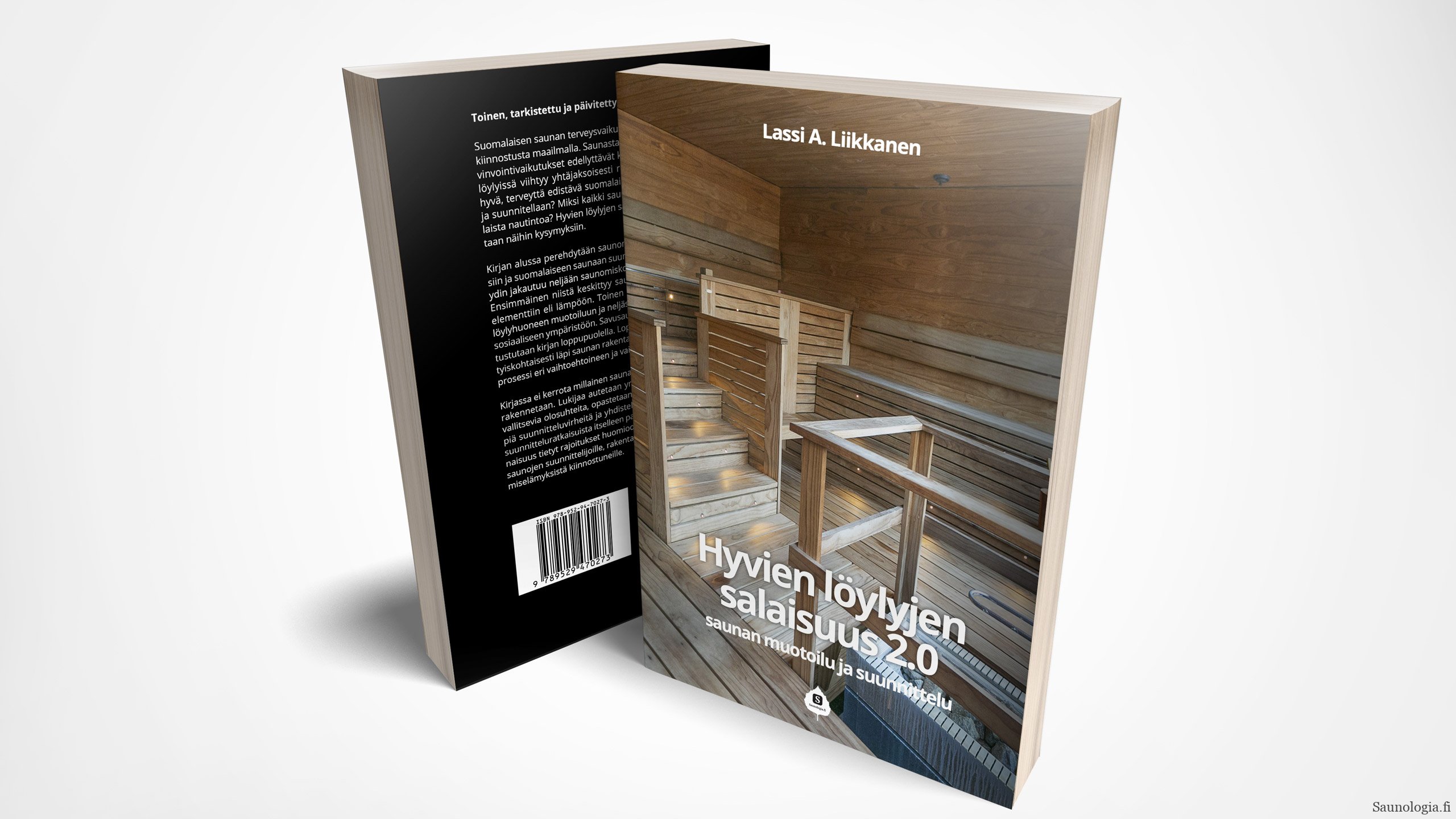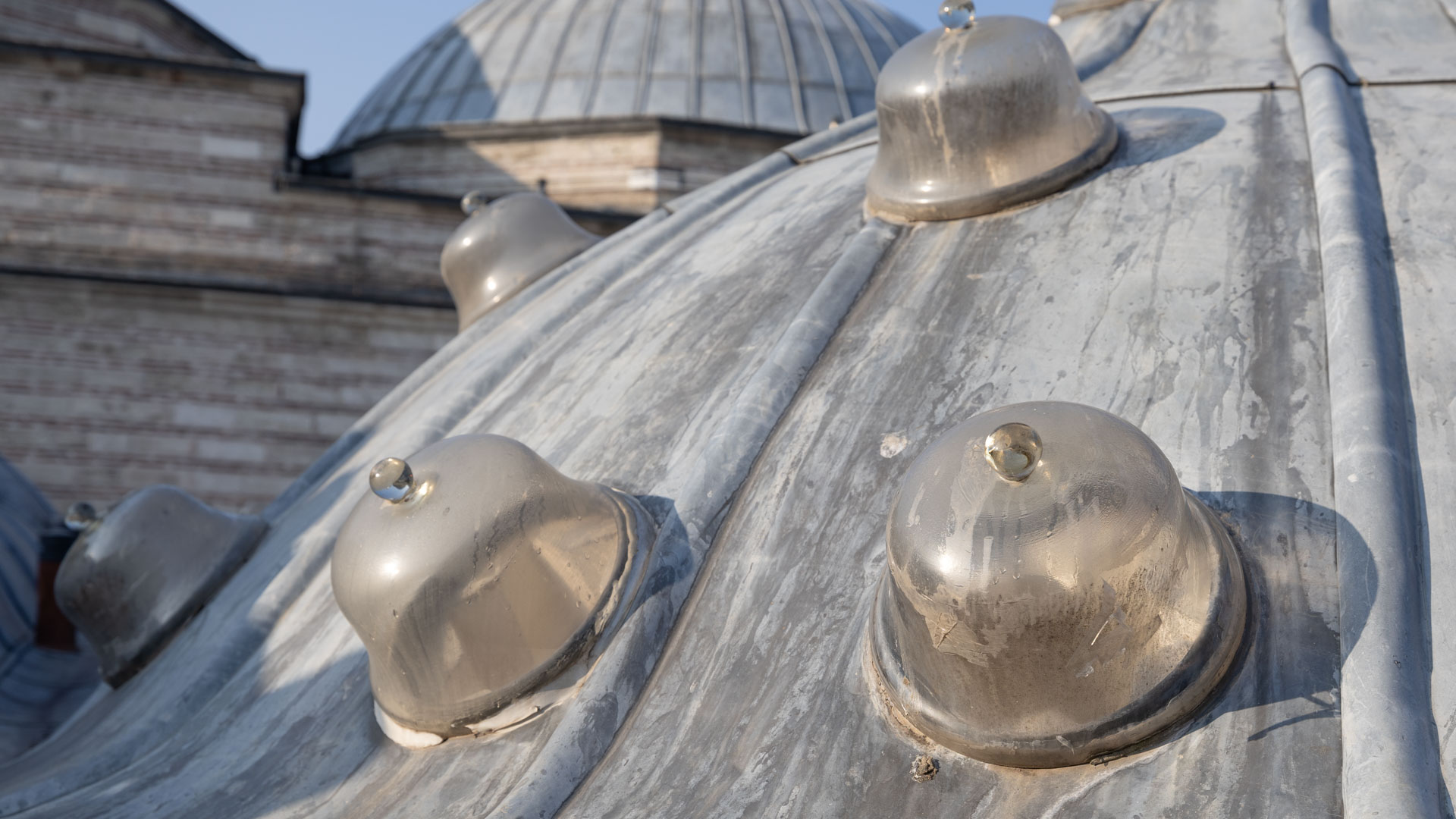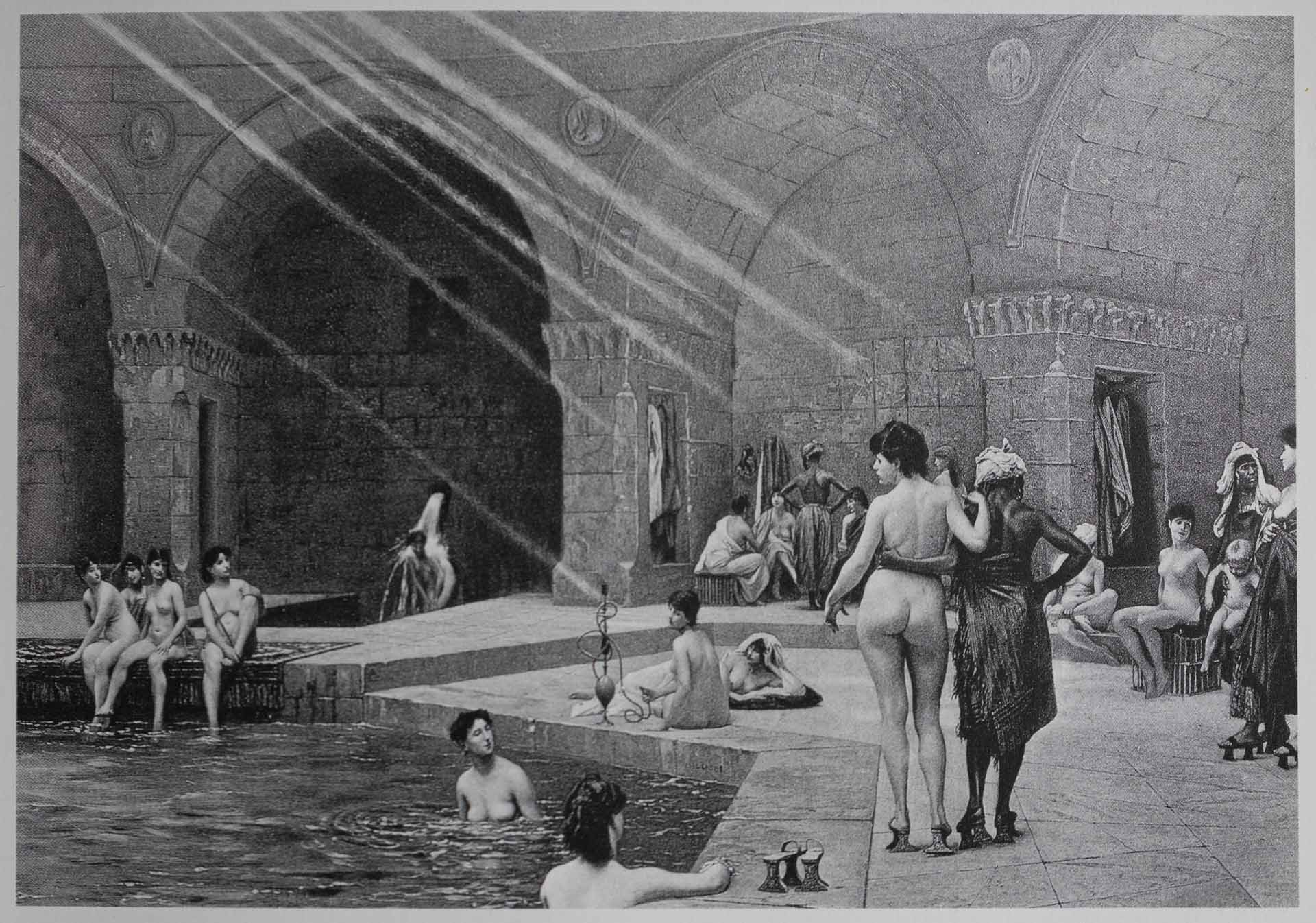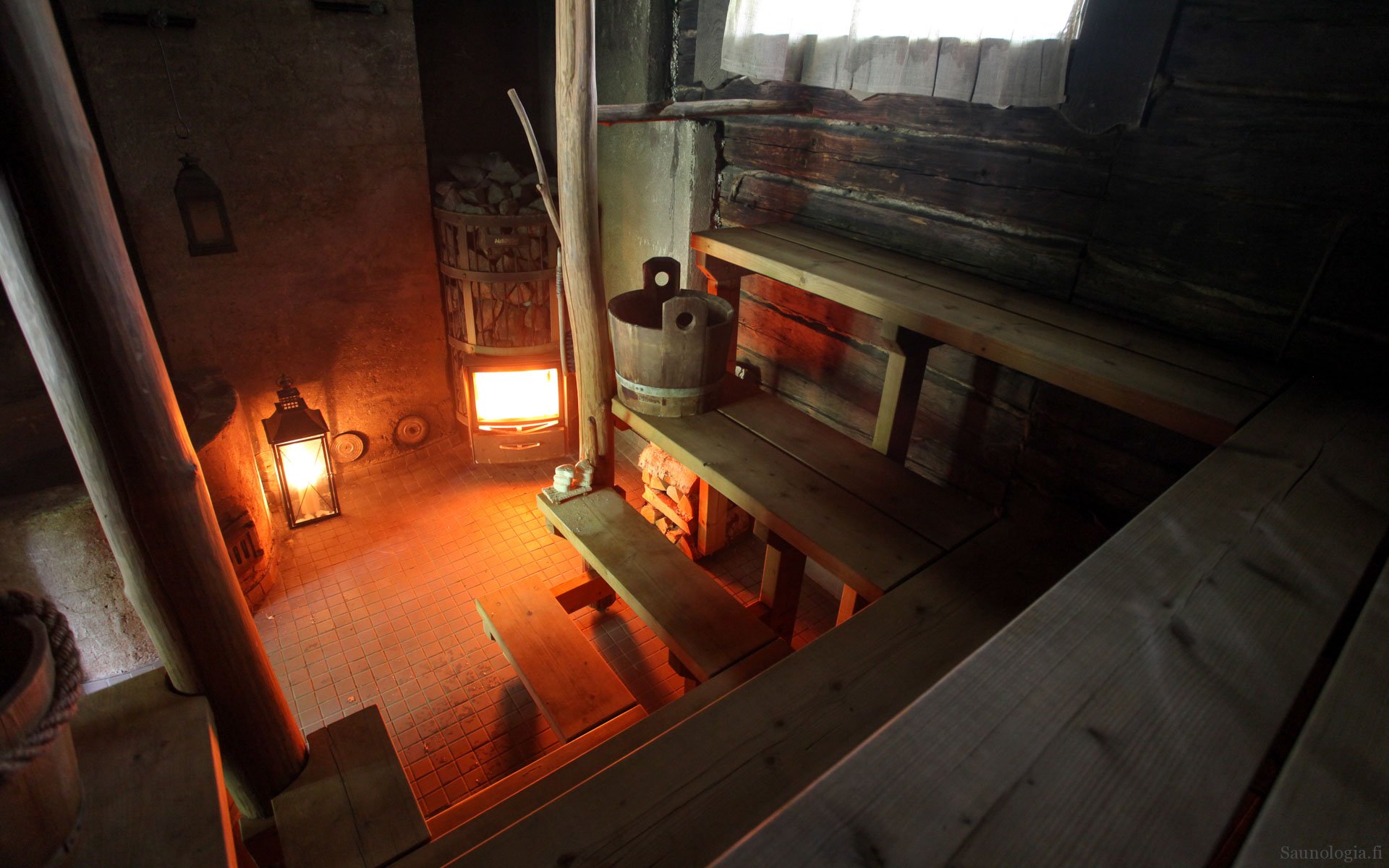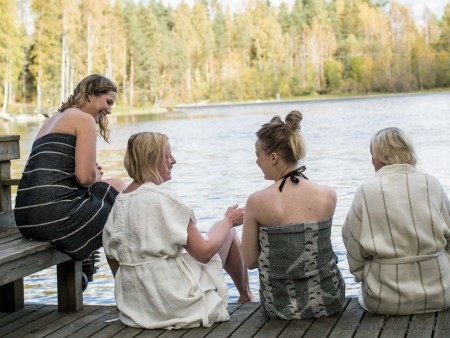The Finnish Sauna Basics
Finnish sauna is a combination of a heated space and a special custom of enjoying a sweat bath. Frequent and prolonged sweating in sauna is known to promote physical and mental well being. Finnish saunas are heated to a range of 65 to 100 degrees Celsius (150 to 210 Fahrenheit) and water is repeatedly thrown on hot sauna stones to produce steam.
This website is about design of Finnish sauna. This page is a summary of the core content. Read more about my books: the Secrets of Finnish Sauna Design and Finnish Sauna Builder’s Companion.
If you are looking for assistance in sauna design or improvement, please see my sauna design and consulting services.
Finnish Sauna Essentials – article collection summarizes my upcoming English book
Part 1: Finnish Sauna Values, Practices and Respect
Part 2: Variety and History of Finnish saunas
Part 3: Heat makes the Finnish sauna and the stove makes the heat
Part 4: Stove selection and basic use
Part 5: Air quality: ventilation solutions
Part 6: Interior design
While waiting for an extended English edition, you can use Google Translate service or Google Chrome browser to preview the Finnish section of this site in English!
You can also find lots of sauna photos from Saunologi Pinterest boards.
The Finnish sauna comes in many forms and functions. In a hundred years, the Finnish sauna tradition has greatly diversified although the extremely numerous modern saunas may easily hide this variety. In middle of the variations, the Finnish sauna remains hot and humid, although not necessarily both at the same time.
The definition of sauna
The International Sauna Association made a definition of the sauna (room) in Aachen convention 8th May 1999. My translation of it goes like this:
Sauna is a hot room with walls preferably made of wood. It is heated by a stove equipped with a sufficient amount of stones, which are heated using wood, electricity, gas, etc. Heating can be continuous or one time. The temperature measured at the level meter above the highest bench is 70–105° C (160–220° F). The humidity is controlled by throwing water onto the stones.
Millions of saunas, millions of opinions
Nearly every Finn takes a sauna bath occasionally, many at least once a week. Thus there is definitely no lack of opinions when it comes ”proper” sauna in this country. However, given the almost religious holiness that Finnish people have adopted sauna as a part of our identity, people communicate things about sauna with great care. Only a few are willing to give advice on how to design and construct a sauna that is representative of “true Finnish” sauna.
I don’t think there is such thing as “the Finnish Sauna.” The most audible and organized voices around Finnish sauna almost unanimously worship the oldest style of sauna, the smoke sauna, with its classical style of construction and strict code of conduct. Although this may be the historical Finnish sauna the past centuries, it is not the Finnish sauna of 21st century. Not at least when it comes to taking measure of where and how contemporary Finns typically bathe! I personally stand with more anarchistic sauna proponents who allow for different forms of sauna delights – as long as it feels great!
The Finns are really clever with their saunas. That’s why our sauna scene is so heterogeneous. However, the range of actual blissful experiences is less than you’d expect. Also, the latest major technical innovation, the electric stove, was invented some 70 years ago.
In recent decades, most renewal in the sauna culture has focused on interior design and overall sauna architecture. That’s also very important for the sauna experience. But at the same time, modern designers seem to have forgotten many essential design principles of that have given the Finnish sauna its good character long time since. With this website, I’m helping to revive these ideas and reminding Finns about good sauna characteristics.
What this website holds
This website is dedicated to creating better saunas through design. It attempts to share knowledge on how different design decisions regarding sauna construction and equipment influence or prepare for a sauna experience. My motivation is the apparent decline of quality sauna design in the world’s leading sauna country (by the number of saunas; nearly 1 sauna for every 2 inhabitants). My main medium is a blog titled “experiential sauna design”. The blog is mostly a fresh collection of old and forgotten ideas, with a fresh taste from careful use of service design methods.
This English section will currently a provide a glimpse into the wealth of information underlying good Finnish sauna design.
Sauna routine or “ritual”
The Finnish sauna proceedings are a complicated matter. Even if you discard the etiquette of proper sauna behavior (the “how” you bath) and just focus on what goes into bathing, you’re dealing with a ritual consisting of 20+ distinct actions!
This is what I counted for a customer journey (a service design artifact) I created about Finnish sauna bathing show below. Every Finn knows this journey by heart, but it is enough complicated to give us trouble as well, e.g. I forget every other week to pack small towels used to cover the hot wooden sauna bench for our family sauna.
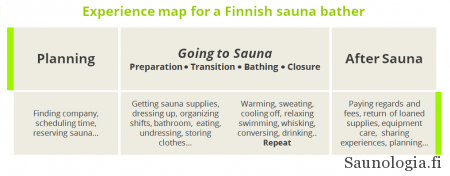
Because of the ubiquitous nature of saunas, there are also several types of rituals or just functions that the sauna delivers. “Going to sauna” usually refers to a specific, dedicated ritual mostly associated with washing up, but as we have saunas in swimming halls, gyms, military establishments, and even in nurseries there are many variations to the ritual as well.
In fact, lot of Finnish sauna bathing may happen as a side activity for sports or mandatory hygiene. A list of different sauna functions for Finns might look like this:
- Thorough cleaning. Sauna was the original Finnish wash room. Some still believe that the only people to get properly clean is to sweat thoroughly.
- Revival. Many people have a quick, 5-15 minute sauna after a physical exercise before and/or after taking a shower.
- Socializing. Finns often seek company for sauna. Sauna can be a good back drop for discussing with friends or negotiating business or politics. The former iron fist president Urho Kekkonen was known to utilize sauna in politics.
- Plain sauna. Going to sauna for the sake of experiencing sauna. Something that the modern Finns can afford. More of this highly esteemed, but maybe not so popular practice later.
- Other rituals for health and well being. Still hundred years ago sauna was essential for many healthcare and agricultural functions. Nowadays we have entrepreneurs organizing sauna yoga or pilates in the hot room. Still some ancient traditions, such as bridal sauna, are also practiced.
Plain sauna explained
When people focus on “plain sauna” this can take anything from 45 minutes to several hours. In brief, sauna experience journey involves planning, preparation, transfer, bathing, recovering and after care. All of these create the whole experience. Bathing is of course the most crucial climax of the lot (and no, sexual climax is not implicated here even though Finnish people generally enjoy sauna in the nude). An essential part is pouring water on the stove rocks to create steam called löyly. This rocks the atmosphere periodically between dry and humid.
Bathing typically involves several rounds and warming oneself in the sauna, cooling off, dipping in a cold water tub or swimming, washing and hydrating. The shorter ritual usually reduces repetition and skips extra pleasures. The gauge of dry temperature at a shoulder level in Finnish ranges from 70 to 110 degrees Celcius. Wet bulb temperature range is more moderate, indicating that the hotter the sauna, the drier it is.
Three principles of design
I believe that there are thee major elements to take into consideration when trying to build a good Finnish type of sauna. This model is a simplification of more multidimensional ideas Finnish sauna gurus have made in the past. It is the following:
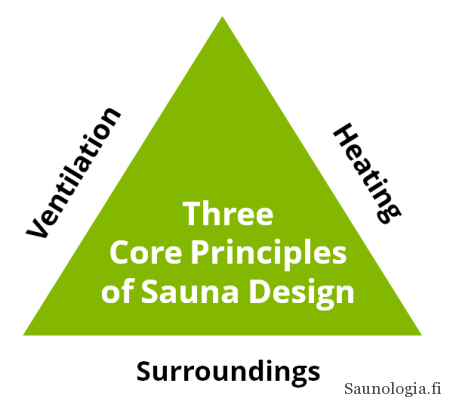
Three principles of designing a space for a good Finnish style sauna experience:
- Heating – enough heat and steam capacity to allow sweating and generating steam from the hot stove stones.
- Ventilation – fresh air, removal of perspiration, carbon dioxide and accumulating steam. Not too much to create chilling or burning, or cooling off the sauna too quickly.
- Surroundings – preparing and helping your mind to absorb the sauna experience. Supporting the fulfillment of the many actions related to the sauna ritual.
There are numerous technical solutions available for creating this sauna experience. The four essential elements found in all Finnish sauna are
- Sauna room / building: hosts the bathing room
- Sauna stove: generates heat
- Stove rocks: store the heat and allow steam generation
- Ventilation: mixing fresh air and carrying heat evenly
The sauna stove can be compared to a car engine. They come in several varieties. Hundreds of thousands of stoves are sold annually in Finland. The stove must be equipped with stones. They are like oil in engine. Stone are key in keeping sauna warm and allowing bathers to get as much steam and extra heat as they like. The more stones, the better it is expected to get.
The building itself must support the sauna. It start from proper insulation that enables to keep the heat inside the sauna room and well functioning ventilation that brings fresh air constantly. Fresh air is especially important if sauna is warmed by continuously burning wooden stoves that consume oxygen.
The surroundings of the main sauna room are of importance. Because of the complexities of the sauna journey, there are many functions the space must support. These all need to be designed for.
Finnish Sauna Essentials – article collection summarizes my upcoming English book
Part 1: Finnish Sauna Values, Practices and Respect
Part 2: Variety and History of Finnish saunas
Part 3: Heat makes the Finnish sauna and the stove makes the heat
Part 4: Stove selection and basic use
Part 5: Air quality: ventilation solutions
Part 6: Interior design
